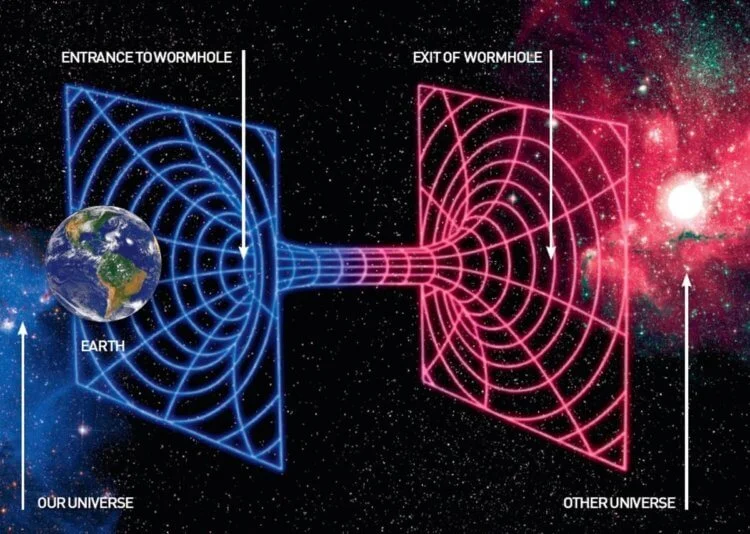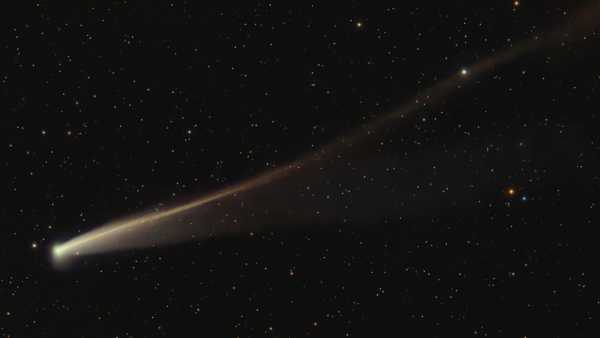Space-time, as we know it today, is a physical model that supplements space with an equal temporal dimension. Thanks to this model, a theoretical-physical construct was created, which was called the space-time continuum. It is important to note that before Einstein’s General Theory of Relativity, understanding of the fundamental laws of physics was incomplete, but the publication of GR in 1905 left many questions, one of which was black holes and wormholes – “tunnels” in space-time that connect different points in space-time. And if the existence of black holes managed to prove several years ago, with wormholes everything is not so unambiguous – they belong to hypothetically existing objects. But some scientists believe that soon we will also be able to find them. Thus, in the last few months, several scientific studies have been published at once, which offer new, intriguing ways to search for these space objects.

How do you find a wormhole?
To begin with, black holes and wormholes are special types of solutions to Einstein’s equations that arise when the structure of space-time is strongly distorted by gravity. For example, when matter is extremely dense, the fabric of spacetime can become so warped that even light cannot escape. Such objects we call black holes.
Because GR allows the fabric of space-time to be stretched and bent, in 1935 Einstein and his physicist colleague Nathan Rosen described how two sections of space-time can be connected, creating a kind of bridge between the two universes. This is one type of wormhole, but since then many others have been described.
Speaking of wormholes, it is impossible not to mention gravitational waves, the existence of which was proven in 2015. The fact is that with the help of powerful LIGO and VIRGO detectors, researchers have already discovered black holes, but their next discovery may transfer wormholes from hypothetical objects, to really existing ones. And if wormholes exist, they may appear to look like black holes from the outside.
The difference between a wormhole and a black hole is that an object caught in a black hole will not be able to escape from it, while once in the wormhole, it will be able to pass through it directly to the other side. The force that we perceive as gravity is actually the result of the curvature of space-time.
The Strangeness of the Universe
So, the planets revolve around the Sun because it creates a bowl shape in the fabric of space. (The easiest way to think of the planets is as balls circling around and inside this bowl.) Black holes, in turn, warp space-time into chasms so deep that nothing can leave them. But space-time can also bend into other strange forms, such as tunnels.
These tunnels, or wormholes, could provide a shortcut between two distant places in space and time, or between two different universes. Space-time can warp, but it can also oscillate. These waves are called gravitational waves and can indicate wormholes.
Gravitational waves, black holes, and wormholes
Researchers believe that a black hole spiraling into a wormhole should create a strange ripple pattern in space-time. And with the right instruments, some observatories could detect them.
That’s the conclusion physicists came to in a paper published in mid-summer on the arXiv.org preprints server. Waves from a black hole-wormhole pair would flash and turn on as the black hole passed through the wormhole and then out again. But to date, there is no evidence for the existence of these objects.
The journey of a black hole through a wormhole
According to Live Science, Gabell’s team looked at a black hole with a mass five times that of the Sun. They imagined a black hole orbiting a wormhole about 1.6 billion light-years from Earth. According to their calculations, when the black hole spins around the wormhole, it should start to spiral inward, releasing gravitational waves.
And at first they would look exactly like the gravitational waves from two black holes. The structure of the waves, which some physicists call chirps, would increase in frequency over time. But upon reaching the center of the wormhole, or “neck,” the black hole would pass through it.
The researchers then looked at what would happen if a black hole originated in a distant place. In another universe, for example. In this case, the gravitational waves in the first universe would suddenly stop, and in the second universe, the black hole would “shoot” outward before spiraling again. It would then have to go all the way back through the wormhole and back into the first universe.




